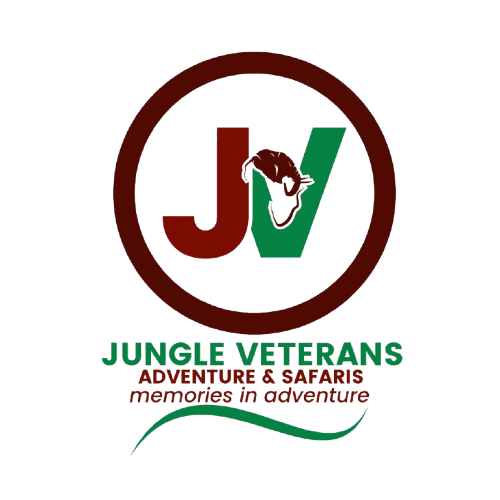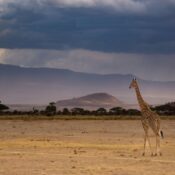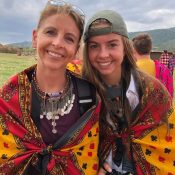
Photographing Africa (from a beginner’s perspective)
It’s half eight on a Saturday morning and I’m waiting outside Melbourne Zoo, fidgeting in anticipation.
A few weeks earlier, my wife and I booked a holiday in East Africa, so I’d dusted off a Sony A6000 that had spent most of its life entombed in a drawer.
Now, I was finally going to learn how to use it.
Despite owning a camera for the better part of a decade and watching a lot of YouTube videos on how to be a better photographer, I stubbornly remain a beginner.
My good photos are largely down to luck; many photos that should have been great were ruined by poor exposure, framing, sharpness, or all of the above.
In fact, I’d recently returned from a trip to Nepal with innumerable shots of sloth bears lost in a dark foreground or blurry rhinos behind perfect, crisp foliage. That experience (plus the eye-watering cost of travelling to Kenya and Tanzania) finally convinced me that it was worth learning to do this properly.
And so I enrolled in a beginner’s wildlife workshop with Matt Krumins, an experienced and award-winning Melbourne-based photographer with a speciality in underwater wildlife.
Our small group had a range of experience and equipment. I had my Sony A6000 (with a Sigma 100-400mm F5-6.3 DN OS lens), whilst others had similar mirrorless cameras or point-and-shoots.
To Matt, it didn’t matter. He was going to start us all from the beginning.

Back to basics
We started with a coffee just inside the entrance while Matt introduced himself and began explaining the iron triangle of ISO, aperture and shutter speed.
His relaxed, informal approach and enthusiasm allowed us to settle in quickly. In any case, I was confident. I’d spent years on this. I’d watched YouTube.
Yet within a few minutes, Matt quickly moved on, and I soon realised that no amount of late-night YouTube can ever match an actual teacher. I should’ve done this much, much earlier.
The first (and probably most important) setting Matt taught us was exposure compensation. I had always mistakenly used exposure compensation in opposition to the brightness of a scene.
For example, on a snowy mountain peak I lowered exposure compensation two stops to offset the bright white scene. I returned with photos of grey snow and a dark blue sky.
I felt strong pangs of regret as Matt taught us the exact opposite; to use exposure compensation to cancel out the camera’s default desire to brighten dark scenes or darken bright scenes.
We moved to the lemur enclosure for a perfect example of how this works. Beneath a bright sun, the lemurs sat in the shade of small rocks or branches.
Our cameras automatically lowered the exposure, but this left the lemurs almost invisible in the darkened shade. By adjusting the exposure compensation up a stop or two we were able to expose the lemurs correctly.
Matt’s second lesson was framing and focus. At the gorilla enclosure, he taught us to place the gorillas against dark or contrasting backgrounds. As the gorillas ambled around or sat and stared back at us, we learned to use wide or zone focus modes with continuous autofocus (when moving) or single-shot autofocus (when still) to get sharp, clear shots.
As Matt pointed out, if a photo is out of focus or badly framed, no editing software can save it. Framing, focus and (to a lesser extent) exposure need to be correct when the shot is taken.
One of Matt’s more interesting tips was that editing software has progressed to the point that ISO on modern cameras is effectively not worth worrying about. I’d always tried to keep it low, but according to Matt, balancing desired depth of field against light conditions is far more important than minimising graininess.
He showed us a fantastic underwater shot he’d taken recently in Tonga of humpback whales framed in scarce light against the black depths of the ocean. He asked if we noticed any grain – we didn’t. The photo had an ISO of 26,000.
And so, filled with new knowledge – and a healthy dose of regret for many past photos that should’ve been great, had I done this course years ago – I left for Africa.

Putting it into practice
After a night in Nairobi, we met our guide David early in the hotel lobby. He asked what animals we most wanted to see – elephants, lions and wild dogs, we said, though we’d be happy to see anything.
He laughed. Elephants would be hard to miss, but wild dogs? He shook his head.
And so we set off into the Nairobi traffic, weaving between cars until David took the expressway over the city. Purple jacarandas stretched above low-rise apartment buildings and dark Maribou storks lurked on rooftops or tree branches, until the city faded away and we entered the dry open country towards Amboseli National Park, in the shadow of Kilimanjaro.
Our first game drive began early the next morning. Kilimanjaro loomed enormously over the landscape, crowned in white, and the soft morning light illuminated a brief rainshower as it passed by.

Talk to anyone who has been on a safari, and they’ll tell you how lucky they were; but it felt extremely lucky to us that within 10 minutes of entering the park we drove straight into a pride of lions with cubs relaxing by the side of the road.
I rested the heavy Sigma lens on the windowsill of the jeep and ran through my settings, prioritising shutter speed to compensate for the zoom and the movement of the lions: ISO 1000, f6.3, 1/1250s.
Keeping Matt’s lessons in mind, I played around with exposure compensation before settling on zero, and tried to frame the lions amidst the grass without letting the sky wash out the image.

I used similar settings all morning, dialling down the ISO as the light grew stronger. We saw an elephant go toe-to-toe with a hippo, a giraffe striding in front of sunbeams that lit the flanks of the mountain, ostriches kicking up puffs of dust as they ran.
I began to adjust a few settings on the fly. Focus was the main issue; a wide focus worked on moving subjects in open space, but was almost useless for anything in long grass.
I switched to centre-point focus and used a back-button focus method, which involves reprogramming a button on the back on the camera to control the focus. This meant I could almost avoid the camera re-focusing on grass every time I pressed the shutter button, though inevitably many images still had the wrong focus.
From Amboseli we moved to Lake Nakuru, on the other side of Kenya, and then down to the Maasai Mara. We got to know David well; he was actually a vet and usually guided safaris in the peak season, which he’d been doing for many years.
He was calm, experienced, and told us of his ambition to run his own outfit – Jungle Veterans Kenya, which he has since launched.
As I became more comfortable with focus modes and the correct use of exposure compensation, I began to develop my eye for framing subjects. My wife and David were extremely patient while I took dozens of photos from different angles or waited for the animals to move.


A particular highlight was a pride of lions eating a two-day old buffalo carcass. Waiting for an hour meant I was able to frame a male lion staring directly into the camera from behind the white ribs of the buffalo; though, to my later regret, I zoomed in too far and cut off the top of his mane.

Herein lay another lesson, one that I was slow to pick up. Zoomed-in portraits of animals are a natural draw – there is something undeniably powerful about the bright yellow eyes of a lion looking straight at you.
But no editing software allows you to zoom out, and many truly great photographs show animals in their particular context and environment.


I could take portrait shots at the zoo, but taking portraits in Kenya meant I almost missed the real stories: the way cheetahs hid in the long yellow grass; the black silhouette of a kopi in front of a red and purple sky; how a pride of lions tried to draw a herd of buffalo into an ambush: the way a huge elephant looked small as it crossed the sheer immensity of the open savannah, that vast landscape washing far into the distance, where sheets of rain magnified the light of a slow-burning sunset.


And so I came home with thousands of images, a newfound love for back-button autofocus, and a stronger passion for wildlife photography.
I put the Sony A6000 back in its drawer – now much more used – and began planning the next trip. And for what it’s worth, I haven’t watched a YouTube tutorial since.
About the author: Ewen Levick is a publisher and travel writer whose works have appeared in a number of magazines in Australia and overseas. He is also the author of Overland, a true story about his journey from Australia to Switzerland without flying



